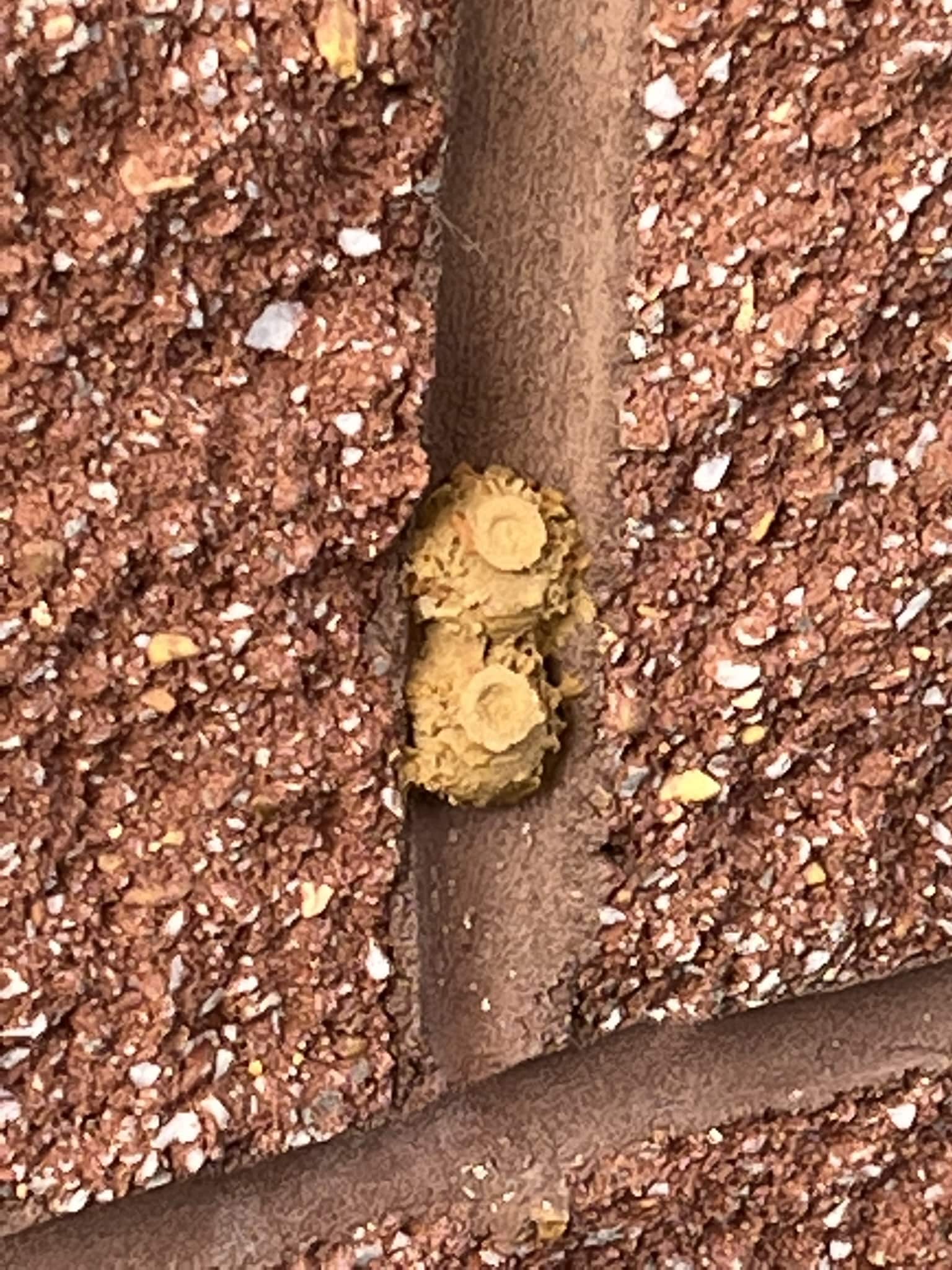Pottery is not unique to humans. Even the best human potters would have to admit that the small round pots of the aptly named Potter Wasp are examples of exceptional craftsmanship. And although this group of small, non-aggressive wasps make the most attractive pots, many other groups of wasps use clay to make nests for their young.
Mud Dauber and Organ Pipe Wasps make large, multichambered nest that are commonly seen on buildings. The smaller, round pots of Potter Wasps are certainly more attractive when we spot them, on window screens or, as in this story, on the brick wall of a building. As it turns out, they are among the most durable of wasp-made nests and apparently examples of nests that are reused to raise more than one wasp.
This story is based on my curiosity about the sequence of appearance of two Potter Wasp nests on a building I frequent – a pharmacy where I regularly pick up prescriptions for an elderly friend. I first spotted a single “pot” on June 24th and took a picture that I shared on Instagram and Facebook. I was excited to find a 2nd pot on July 1st (7 days later). Within a week, the first pot was open, suggesting that a young wasp had made its escape.
Although I did not make weekly observations since then, what kept my attention was the resealing of the first pot a short time later. Fast forward to December 31st and the two pots remain sealed. Does this mean there are still a young wasp in each, sealed in since the summer? Did I miss the emergence of wasps from either or both nests between the months of July and December – and additional resealing of those nests? Perhaps!
As a scientist, I wish I had made more regular visits to these nests – prescriptions ready for pickup or not. What is interesting is that even these observations may well add to the uniqueness of these small wasps. The apparent reuse of a nest may be unique to Potter Wasps. From my cursory research, wasps do not reuse nests. In addition, exceptional physical characteristics of these nests may be part of the story.
Dr. Richard Brown is a renowned entomologist with the Mississippi Entomological Museum at Mississippi State University – and a friend and mentor during my time in graduate school. My Facebook post about these nests led him to share his observation about the durability of these pots. According to Richard, a Potter Wasp pot remained intact in a vial of water in his lab for 2 years, unlike Mud Dauber nest that dissolve when exposed to water. Richard suggest that female Potter Wasps mix a chemical compound with the clay/mud to make it like concrete – resistant to degradation. To his knowledge, the chemical has not been identified.
This may well-explain the reuse of these pots by female wasps. But alas, although a fine hypothesis, detailed research is needed to explain these interesting, but unconfirmed observations. This is how science works. If I were only younger.
So now you know who makes these dainty, yet well-crafted and durable pots – and a bit more about how unique they may well be in the world of wasps. Now, if only a human potter could recreate these, right? Yes, this is a challenge to my potter friends.
Hope to see you in our great outdoors!




